Home > Livestock: reducing carbon in feed supply chains
Livestock:
reducing carbon in
feed supply chains
AF looks at the impact of carbon emitted in the production of livestock feed.
What’s the problem?
The livestock sector is working hard to understand the carbon footprint of feed and ingredients. For example, it is well established that up to 80% of the carbon emitted in getting a broiler chicken to the supermarket shelf is tied up in the feed, (just 8% in breeding and hatching, 4% in growing the bird and 8% in factory processing and transport).
The 80% feed portion is largely down to soya meal, and bringing it to Europe from South America. This is not just the case for poultry, as soya is still the major protein source in pig and cattle feed.
Is soya a dirty word?
In June Farminguk.com highlighted the work of The Nitrogen Efficient Plants for Climate Smart Arable Cropping Systems (NCS) project, which seeks to reduce the amount of imported soya by 54% and replace it with home grown pulses. Whilst this sounds laudable, retailers no longer see soya as a dirty word although all major retailers and producers are signatories of the UK Soy Manifesto which expresses a commitment that all imported soya coming to the UK will be deforestation and conversion free, and some dairy farmers are not permitted by their customers to feed soya to cattle.
The challenge of replacing soya
There are a number of problems with replacing soya with pulses.
- Lifecycle analysis of soya shows the majority of carbon emitted in soya production comes from cultivations and inputs – the shipping to Europe is almost incidental at single figure percentages.
- Using pulses or alternative proteins in animal feed requires a rebalancing of amino acids, the synthetic amino acids required come from Korea and China, and their intensive production methods largely replace the carbon saved.
- Ongoing controversy over the use of arable land for feed and energy crops makes it doubtful there is sufficient land, or public appetite, for increasing feed protein area from 5% to 20% of UK arable land use.
Alternative proteins
Nutritionists have been looking at alternative proteins, like lupin and sunflower, since the mid-1990s, and we are no further forward than we were then with the main contenders still considered ‘novel’.
There is concern that if alternative crops become available in commercial volumes they will be derailed by market shifts in the global commodity markets. Once the premium for being ‘specialist’ is no longer available, farmers may be reluctant to plant them.
Soya free rations are available and further trials are sure to continue, but current strains of livestock have been bred to grow efficiently on a soya-based diet for several decades, so changing proteins would affect yields and costs.
Looking at insect proteins, these are interesting but due to the intensiveness and high cost of largescale production, it is thought unlikely that insects will have an impact beyond the pet food sector.
What can we do?
As Poultry World wrote when reporting on the May 2023 World Nutrition Forum in Cancun, “When it comes to sustainability the time to be proactive is now. Acting in crisis generally costs more as decisions are made with no science behind them.”
To reduce carbon in livestock feed we need to be more efficient with the same ingredients, making better use of wheat, OSR, pulses and soya. Growers and nutritionists are looking at precision nutrition, with a view to further reducing FCRs.
AF has been interested to discover the work of the Round Table on Responsible Soy Association (RTRS) which is “a non-profit organisation promoting the growth of production, trade, and use of responsible soy”, and taking a look at their membership it is straight from the pages of Who’s Who in global food production and retail. This shows that the responsible production and sourcing of soya is a live subject, but also that soya is still preferred to alternatives.
Work is also being done by the Global Feed Lifecycle Assessment Institute (GFLI), which is developing a “lifecycle analysis (LCA) database and tool, which together with the underlying UN FAO LEAP based methodology aims to be the reference for assessing and benchmarking feed industry impact and improvement in LCA calculations.” This enables millers and farmers to identify lower carbon cereals for use in feed formulations.
Final thoughts
AF recently met with Richard Buck and Anthony Waller of Crown Chicken Ltd. Crown produce 7.5k tonnes of pig and poultry feed per week across two mills at Denham and Kenninghall, and feed c5% of the UK broiler flock. They confirm that it is very hard to imagine a day when South American soya isn’t used in Europe, because we already have reducing stocking densities, increased welfare, higher input costs and greater regulation, so feed costs and complexity need to be minimised.
If we are to continue producing meat, milk and eggs which are affordable to consumers, then compound feeds and imported proteins are likely to remain. But as stated previously we will need to feed with more precision, and contemplate a world where the production and consumption of meat may have to be different in order to achieve the ambitious carbon targets being set by governments, banks, customers and consumers.
Additional information
Allaboutfeed.net are running a series called ‘Future feed talks?’ These cover discussions with scientists, vets, corporate sustainability directors and so on, discussing the latest research & findings, new trends and current and future challenges and opportunities in the animal livestock sector including, swine, poultry, ruminants and animal feed, and there is a link here.



